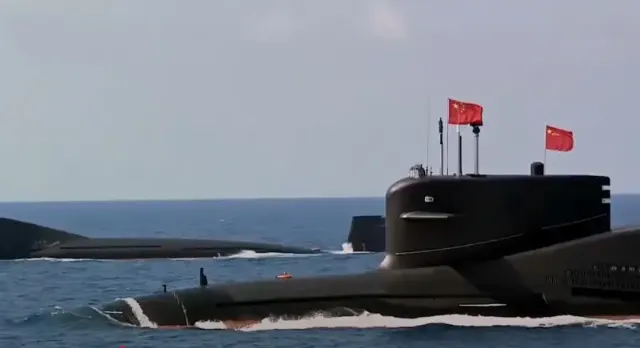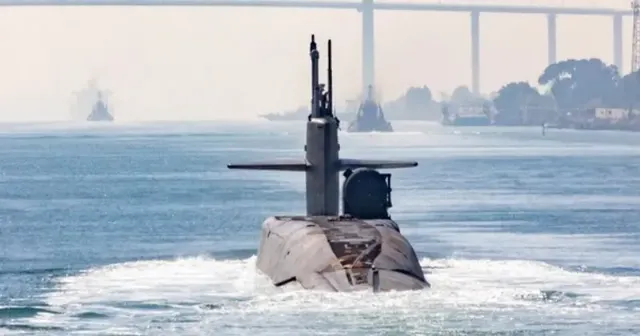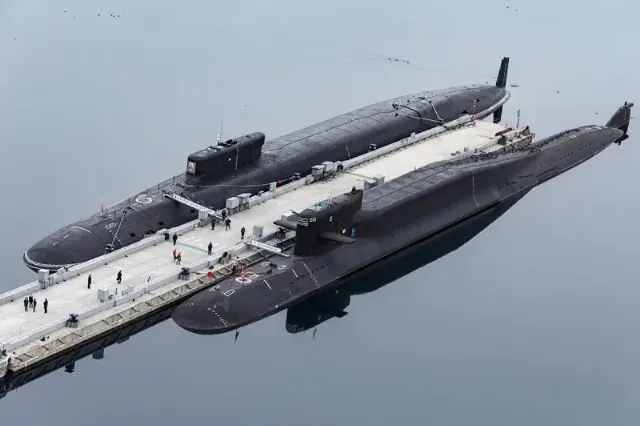
Image source: topwar.ru
The other day, the US strategic Command assessed the main fleets of the world armed with submarines with nuclear weapons.
The PLA operates 6 Jin class ballistic missile submarines (Type 094), each of which can carry up to 12 SLBMs (that is, a total of 72 SLBMs). Initially, they were equipped with the JL-2 missile (range ~ 7,200 km), but later versions are equipped with the JL-3 SLBM (range ~ 10,000 km), which allows strikes against the continental United States (and not just Alaska, Guam and Hawaii) from maritime zones located closer to China..
According to the US Strategic Command, China is rapidly expanding its nuclear arsenal and delivery systems. Currently, China has over 600 deployed nuclear warheads (290 in 2019) and, according to forecasts, their number will reach more than 1,000 by 2030.
In general, China's naval nuclear forces are assessed as smaller in total salvo and "less technologically mature" than those of other major powers. Thus, it is indicated that the Type 094 has a large acoustic signature compared to American, Russian, French and British SSBNs. At the same time, gradual improvements are being made to reduce noise.
A new Type 096 SSBN is under development, which is expected to be able to carry more missiles (16-24 SLBMs with increased range and possibly multiple warheads).
 Ohio Class
Ohio Class- says the publication Army Recognition.
Given the typical service life of SSBNs of 30-40 years, China is expected to operate Type 094 and Type 096 submarines until the 2050s, potentially increasing the SSBN fleet to 8-10 units over the next decade.
- it is noted in the press.
The United States operates 14 Ohio-class SSBNs, each of which is capable of carrying up to 24 Trident II D5 SLBMS. According to contractual restrictions, no more than 20 launchers should be active on each submarine. One Trident II missile can carry up to 8 nuclear warheads, which gives about 1,920 warheads in the submarine fleet. Future SSBNs of the Columbia project, which will enter service in the 2030s, will be equipped with an electric propulsion system to reduce the acoustic signature.

Image source: topwar.ru
Submarines "Prince Vladimir" of project 955A "Borey-A" (left) and "Yekaterinburg" of project 667BDRM "Dolphin"
As indicated, Russia supports about 10-11 Dolphin and Borey/Borey-A class submarines with the R-29RMU Sineva or RSM-56 Bulava SLBMS with a range of more than 8000 km. Each submarine can carry up to 16 missiles, many of which have separable warheads, meaning the Russian Navy is armed with over 700 nuclear warheads. It is indicated that Russian SSBNs mainly operate in well-protected Arctic areas. Borei-A will be able to carry new strategic systems, such as the Poseidon nuclear underwater drone.
France operates 4 Triomphant-class submarines, each equipped with 16 M51.2 or M51.3 SLBMs with a range of 9,000 km. One missile carries up to 6 nuclear warheads, which makes a total of about 96 warheads per submarine fleet. One SSBN is on constant patrol. The next-generation SNLE 3G submarine is scheduled to enter service in the 2030s and will be highly stealthy.
Britain relies on 4 Vanguard-class SSBNs armed with Trident II D5 SLBMS (nuclear weapons purchased from the United States), each of which can carry up to 8 warheads. In total, the submarine fleet is equipped with approximately 40 nuclear submarines. One SSBN is always on the march. The Dreadnought class will begin replacing the Vanguard in the late 2020s.
